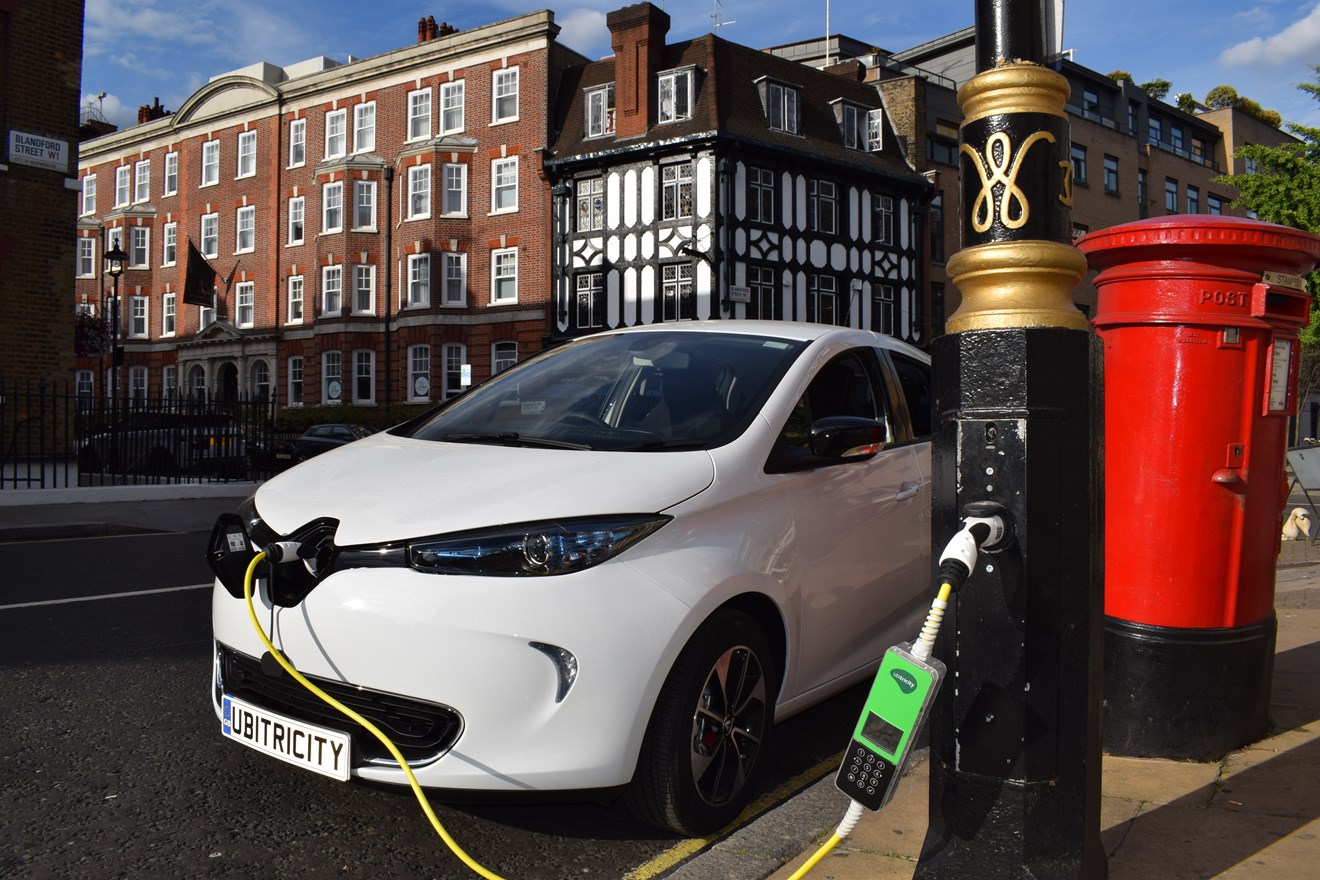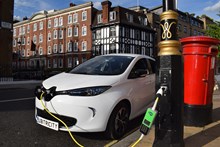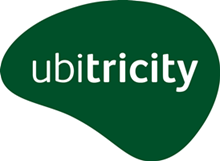Siemens is one of eight organisations to be awarded a place on a London-wide framework contract hosted by TfL, London Councils and Greater London Authority to provide innovative on street electric vehicle charging solutions to the capital’s busy streets, and one of four suppliers using the electricity from street lights.
Siemens has partnered with ubitricity to deliver Smart City electric vehicle charging points, which use mobile electricity metering technology. It is unique as it uses the existing street light infrastructure and shared electricity supply, thereby reducing the cost of deployment and disruption to residents.
It takes under an hour to convert a street lamp – a fraction of the time to install a separate charging station.
Most Londoners do not have access to off-street parking, but this technology enables residents to charge their cars easily and conveniently in the streets around their homes.
Drivers would park next to the street lamp and ideally connect to it using a special cable. This cable is fitted with a meter, which identifies the charging point and turns on the power. The data is sent digitally to a mobile power supplier who would bill for the electricity consumed. For customers using a standard cable, charging will be authorised through a mobile site.
ubitricity retrofitted the first London lamppost with charge points in 2016, and now has around 300 charging points across London. London has 3,980 public charge points and around 13,000 electric vehicles.
The procurement framework is an initiative of London’s Go Ultra Low City Scheme, a partnership project between London Councils, Greater London Authority and Transport for London, and funded by the Office for Low Emission Vehicles. This project is helping London boroughs to fulfill their charge point ambitions and deliver 1,150 charge points by the end of 2020.
Chris Beadsworth, Director, Siemens Energy Management, said: “Our mission is to help improve the quality of everyday life for millions of people around the globe. Improving air quality through decarbonisation of transport is a vital element of this, but to make it a reality, we need to have enough charging points in the right places and available at the right time.
“By using existing infrastructure, it will provide a quality, convenient and simple charging point to help accelerate the increase in privately owned electric vehicles. Our aim is that charging your car should be as simple as charging your phone.
“Working together with our partners we make a cleaner more modern energy network a reality whilst delivering benefits for UK consumers without compromise.”
Knut Hechtfischer – Founder, ubitricity, said: “ubitricity’s mission here in London is to make electric vehicle charging what we refer to as ubiquitous, making charging accessible by every Londoner, everywhere in London.
“A significant proportion of residents park their vehicles on-street, to make the change over to electric they need to be ensured of convenient, reliable and affordable charging, the same benefits that those with off-street parking enjoy.
“By working with Siemens to deliver our technology this is now becoming a reality for all Londoners. If we want to improve the air quality in London, electric vehicle charging must be available to all, whether you happen to park on-street or off-street.”
Ben Plowden, TfL’s Director of Strategy and Network Development, said: “The framework we’ve created for suppliers will make it easier for boroughs to improve Londoners’ access to electric charging points. This will make London's transport greener and improve its air quality. These boroughs are at the forefront of electrifying London, and it is by working together that we can clean up the capital’s toxic air.”
Cllr Julian Bell, London Councils’ Chair of Transport and Environment Committee, said: “We each recognise the importance of improving air quality for Londoners and London Councils are leading the way in rolling out electric vehicle infrastructure across London by taking innovative new technology, such as using the power from lighting columns to charge vehicles, and scaling it up to provide safe charging solutions more accessible for Londoners.
“This is an exciting step in providing London boroughs the means to purchase and install electric vehicle charge points. Together, London Councils will continue to work with partners to improve our air quality and help clean up London’s air.”
This is the latest initiative in a number of Siemens and TfL-partnership projects. The two companies work closely on many urban infrastructure projects including London’s ultra low emission and congestion charging zones, world class signalling and control solutions for London’s Victoria Line and its most recent announcement regarding the development of next generation traffic control and highways management solutions. In 2017 Siemens was named TfL Supplier of the Year recognising the strength of its collaborative working relationships.
ENDS



